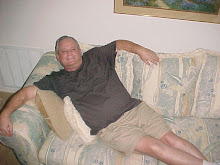The stock ticker evolved from telegraph technology. Many inventors of the 19th-century such as Thomas Edison and Alexander Graham Bell got their start as telegraph operators. Their experience as telegraphers provided them with a good understanding of the principles of electricity, electromagnets, mechanical devices, and machining tools. Stock ticker machines are an ancestor of the modern computer printer, being one of the first applications of transmitting text over a wire to a printing device.
In 1867, Mr. Edward A. Calahan of the American Telegraph Company invented the first stock telegraph printing instrument. It was Calahan's idea that stock prices could be provided through some form of telegraphy. The distinct sound of the telegraph printing instrument eventually earned it the name of the stock ticker.
Eventually Edison's evolving improvements in stock ticker technology resulted in the introduction of the Universal Stock Ticker in 1869, had an alphanumeric printing speed of approximately 1 character per second. For this and some related inventions Edison was paid $40,000. The Universal was highly dependable and was produced in high volume. At least 5,000 of these devices were produced and this machine was in service delivering stock quotes up to the the crash in 1929. The Universal Stock Ticker was Edison's first commercial success and established him with Wall Street connections that would fund development at his Menlo Park laboratory, as well as funding many of his greatest inventions, including the incandescent electric light bulb.
The self winding stock ticker was in use in 1870. It was used for about eighty years for receiving stock and commodity quotations from the nation's leading exchanges. The self-winding device is the image one generally imagines when referring to a stock ticker. One of the manufacturing vendors in the early 1900s was Thomas Edison's West Orange, New Jersey, plant, current site of the Edison National Historic Site. These "Western Union" self-winding tickers are sometimes mistakenly thought to be invented by Thomas Edison because they were manufactured at his plant. In reality, it is doubtful that Edison had any involvement with Western Union's self-winding ticker.
During World War II many of the Universal and self-winding tickers were scrapped for metal or sold off to businesses in South America. In 1960, Western Union ordered all remaining tickers destroyed.
Tuesday, September 14, 2010
Subscribe to:
Post Comments (Atom)

No comments:
Post a Comment